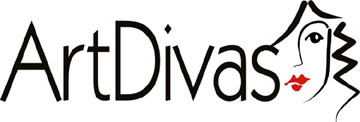 ™
™
Resources
Pavel Zoubok, owner of the Pavel Zoubok Gallery in NY writes: "Perhaps no art form expresses the character of the twentieth century and the contemporary moment with greater clarity and immediacy than collage. Narrowly defined, collage is the construction of images through the deceptively simple act of pasting cut or torn papers. The term derives from the French word coller, meaning to glue, paste, or stick. Collage, however, is much more than a medium for making pictures. It is a mode of perception, a multi-dimensional language with aesthetic implications that span the histories of art, architecture, literature, and music. In the visual arts collage first emerged as a fine art medium in the papier colles, or pasted papers of the Cubists Georges Braque and Pablo Picasso. Since then, it has played a vital role in almost every phase of Modernism. Its influence is most poignantly reflected in Italian Futurism, Constructivism, Dada, Surrealism, Pop Art, and Fluxus. Of the many modern masters who worked in collage, however, only a handful can be considered collagists in the fullest sense. Artists such as Kurt Schwitters, Hannah Höch, Max Ernst, Marcel Duchamp and Joseph Cornell, to name but a few, changed the face of Modernism by asserting that art could indeed be made from almost anything. Even the pictorial purity of Abstract Expressionism could not evade the powerful allure of collage. Robert Motherwell, Lee Krasner, Anne Ryan and Robert Goodnough used collage to expand the practice of abstract painting. |
||||
| Fairfield Visual Arts Association |
Vacaville Art League and Gallery |
Advocates for the Arts |
Vacaville Magazine | Lawler House Gallery |
| Solano Community College Herger Gallery |
Vallejo Community Arts Foundation | ArtsBenicia | Crocker Art Museum |
Marin Museum of Contemporary Art |
| Davis Art Center Tsao Gallery |
 |
Sacramento Fine Arts Center |
||
| Urban Ore Berkeley, CA |
Pavel Zoubok Gallery NY |
|||
Brigitte, Annie, Ann
Anna Maria, Robin, Ramona, Janet
Contact Us: info@artdivasart.com
All artwork is the property of the ArtDivas and ArtDivasArt.com. Unauthorized use without permission is prohibited.
Website designed and maintained by JEHM Publications.com
©JEHM Publications 2005-2014